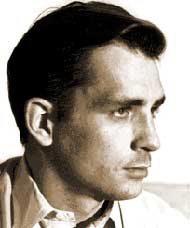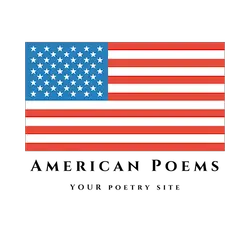 Jack Kerouac (March 12, 1922 – October 21, 1969) was an American novelist, writer, poet, artist, and one of the most prominent members of the Beat Generation. His writings, most of which were autobiographical, revolved most of the time around his own adventures throughout the world, and also around some of his own ponderings and reflections that ensued during the course of his life.
Jack Kerouac (March 12, 1922 – October 21, 1969) was an American novelist, writer, poet, artist, and one of the most prominent members of the Beat Generation. His writings, most of which were autobiographical, revolved most of the time around his own adventures throughout the world, and also around some of his own ponderings and reflections that ensued during the course of his life.
Most of his life was spent in the vast landscapes of America and with the people that live among them. Faced with a fast-changing America, Kerouac sought to find his place in this climate and tried to effect a change, bringing him to reject the values of the fifties that celebrated growing consumerism and the new suburban lifestyle, among many other things. His writings actually often reflect a profound desire to break free from society’s mold and to try to find a deeper meaning to life, which eventually led him to start experimenting with different drugs (he once tried psilocybin with Timothy Leary), to study spiritual teachings such as those offered by Buddhism, and to embark on numerous trips throughout the world. His books are also sometimes credited as having contributed in sparking the counterculture of the 1960s.
Born Jean-Louis Lebris Kerouac, in Lowell, Massachusetts, to a family of Franco-Americans. His parents, Leo-Alcide Kerouac and Gabrielle-Ange Lévesque, were natives of Quebec. Like many other Quebecers of their generation, the Lévesques and Kerouacs emigrated to New England to find employment. Jack didn’t start to learn English until the age of six. At home, he and his family spoke Quebec French. At an early age, he was profoundly marked by the death of his elder brother Gérard, later prompting him to write the book Visions of Gerard.
Later, his athletic prowess led him to become a star on his local football team, and this achievement earned him a scholarship to Columbia University in New York. It was in New York that Kerouac met the people whom he was to journey around the world with, and return to write about: the so-called Beat Generation, which included people like Allen Ginsberg, Neal Cassady and William S. Burroughs. After breaking his leg and arguing with his coach, the football scholarship did not pan out, so Kerouac left to join the Merchant Marine in 1942. In 1943, he joined the United States Navy but discharged during World War II on psychiatric grounds.
In between his sea voyages, Kerouac stayed in New York with his friends from Columbia. He started writing his first novel, called The Town and the City, which was published in 1950 and earned him some respect as a writer.
Kerouac wrote constantly, despite not publishing another novel until 1957 when On the Road, published by Viking Press, finally appeared in print. From the point of view of the character Sal Paradise, this mostly autobiographical book dealt with his roadtrip adventures across the United States and into Mexico with Neal Cassady (represented as Dean Moriarty). The novel is often described as the defining work of the post-war jazz-, poetry-, and drug-affected Beat Generation. He wrote it in an extended session of “spontaneous prose”, or stream of consciousness, which created a style of writing entirely of Kerouac’s own making. He was hailed in some circles as a major American writer, and reluctantly as the spokesman for the Beat Generation.
His friendship with Allen Ginsberg and William Burroughs, among others, defined a generation. Kerouac also wrote and narrated a “Beat” movie titled “Pull My Daisy” in 1958.
In 1954, Kerouac discovered Dwight Goddard’s “A Buddhist Bible” at the San Jose Library, which then marked the beginning of his studies of Buddhism and his own personal quest for enlightenment. He chronicled parts of this, as well as some of his adventures with Gary Snyder, in the book “The Dharma Bums”, published in 1958. Kerouac developed something of a friendship with the scholar Alan Watts (cryptically named Arthur Wayne in Kerouac’s novel Big Sur, and Alex Aums in Desolation Angels). He also met and had discussions with the famous Japanese Zen Buddhist authority D.T. Suzuki. At some point in his life Kerouac wrote “Wake Up”, a biography of Siddhartha Gautama (better known as the Buddha) that remains unpublished.
Kerouac died prior to finishing his “Duluoz Legend” project, which exists only as an incomplete autobiographical manuscript.
He died on October 21, 1969 at St. Anthony’s Hospital in St. Petersburg, Florida from an internal hemorrhage at the age of 47, the unfortunate result of a life of heavy drinking, seen by some as a way to overcome his shyness. He was living at the time with his third wife Stella, and his mother Gabrielle. He is buried in his home town of Lowell.
A DVD titled “Kerouac: King of the Beats” features several minutes of his appearance on Firing Line, William F. Buckley’s television show, during Kerouac’s later years when alcoholism had taken control. He is seen often incoherent and very drunk.
Books also continue to be published that were written by Kerouac, many unfinished by him. A book of his haikus and dreams also were published, giving interesting insight into how his mind worked.
In August 2001, most of his letters, journals, notebooks and manuscripts were sold to the New York Public Library for an undisclosed sum. Douglas Brinkley also has a deal at the moment allowing him exclusive access to parts of this archive until 2005. The first collection of edited journals, Wind Blown World, was published in 2004.
